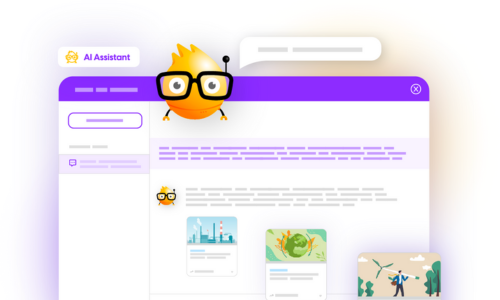Simple Ways to Build a Culture of Continuous Learning at Work
Learning and Development (L&D) is in the middle of an exciting change. The nature of work is shifting, and as a result, the nature of learning is undergoing its own transformation.
According to Deloitte’s most recent Global Human Capital Report, skills are becoming more important than job descriptions; workplaces are becoming increasingly more skills-based. Because technology is changing quickly, a skill-based workforce is never static. The World Economic Forum (WEF) reports that 44% of workers’ skills are likely to be disrupted in the next five years.
This means workers should be in a constant state of learning, picking up new skills and dropping old ones as the workplace evolves. For companies to remain agile, they must move away from a training culture — in which companies serve specific training to employees — to a culture of continuous learning.
What is a culture of continuous learning?
A culture of continuous learning is a culture that prioritizes gaining and sharing knowledge, and which values and rewards both individual and organizational learning.
In a workplace with this kind of learning culture, employees are encouraged to pursue and direct their own learning, while the organization’s L&D leaders provide them with learning opportunities.
Why is a culture of continuous learning important?
A career is no longer the end product of an education. Now, a career itself is an education for employees. It has to be; technology is developing at a lightning pace, and many of the skills employees were using even a few years ago are outdated. Employees who are in charge of their own learning know what they need to learn and are able to find that learning when they need it, becoming more adaptable and making their organizations more agile, cooperative, and sustainable.
For managers, however, creating an organizational atmosphere of continuous learning might seem like an overwhelming task, as it represents a shift in an organization’s learning and training philosophy. Changing the culture of any entity is daunting; leadership will have to take a hard look at their company’s learning culture, commit to working out a strategy for continuous learning, and allocate resources to support employees.
While the big picture is important, the real creation of a culture of continuous learning happens on a smaller scale: on teams and in smaller departments where managers encourage their employees to learn whenever they can. There are many small, every-day steps managers can take to support employees and build that culture of continuous learning from the ground up.
Integrating continuous learning into your team’s work life
- Accept that development is becoming learner-centric.
Learning should be about the learner, and many learners expect and want their company to provide development opportunities for them. In fact, workers are happiest when development opportunities are provided for them: according to a study, a third of the people who left their jobs in 2021 said they left because they had no opportunities for advancement. Professional development allows employees to learn skills that will eventually help them land better jobs. That doesn’t necessarily mean that the training provided by the company will let them do that, since employees who get the training they want feel like their employers care more about them and are less likely to leave.Creating a learner-centric training environment means that managers have to be willing to relinquish some control. Rather than trying to push certain content on employees, consider their daily lives and try to anticipate the sort of learning they will need to do their jobs more effectively. Think of it in terms of a cafeteria: you are no longer serving a hot lunch with a predetermined menu. Instead, you’re thinking about what your employees might be hungry for, creating a buffet and allowing them to help themselves. - Realize that learning itself is a skill.
You can’t just send your employees out into the world and expect them to be excellent learners on their own. Learning is a skill. The trouble is that most people believe learning is innate, and that they already have that skill.“We all think we have it,” said Matthew Smith, former Chief Learning Officer for McKinsey & Company, interviewed on the McKinsey podcast. “So, we might say, ‘I’m a fast learner’ or ‘I’m a slow learner’ or ‘I learn in this way or that way.’ But, actually, a lot of the underlying research—there are several strands of research—shows that people can actually build skills to learn new skills.”In other words, your learners need to be taught how to learn before they can truly reap the benefits of a learning culture. - Provide opportunities for employees to access the modes of learning they’re used to.
In many cases, this means online resources. Organizations can support virtual learning in a variety of ways; by subscribing to a content library that offers on-demand learning opportunities, for example. Managers can support mobile learning much more simply— by not giving employees a hard time about being on their phones at work.
Continuous learning is good for everyone
Remember Jurassic Park’s “Life finds a way” line? Learning also finds a way. If you don’t provide opportunities for your employees to improve their skills, they will look for learning on their own.
Most people head to Google and YouTube when they don’t know how to do something, and as a manager, you may not approve of the teachers they’ll find there. So rather than allowing your employees to dig up learning on their own, offer them access to a high-quality content library that will let them find the learning they need when they need it.
If you show your employees that you support their independent learning endeavors, they will appreciate that. And if you give them the means to educate themselves, they’ll see that as a perk.





